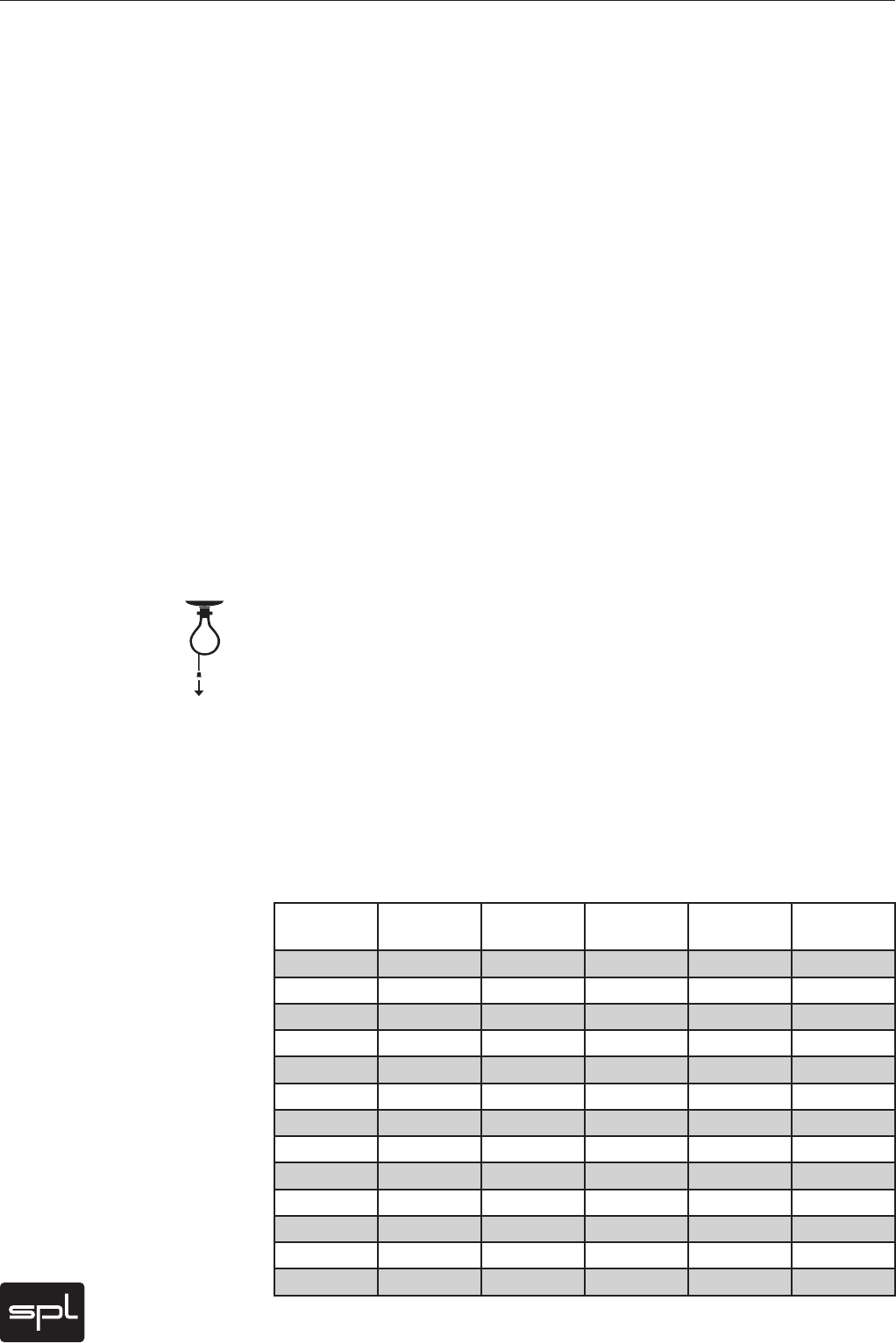
12
Passeq
One Coil per Filter, one Core per Coil
Each Passeq lter is individually constructed for its intended frequency, that is, each coil,
condenser and variable resistor (var. resistor=boost or cut control) ensemble is sonically
tuned to its intended frequency range. Thus each lter has its own musically sensible audio
color appropriate to its own frequency.
In turn, each coil is also wound on its own separate core to avoid mutual and degrading inu-
ences which stem from past designs where multiple coils were wound on a single core. Not
the least, the construction of each lter on its own particularly core also provides for excel-
lent THD values.
Allocation of Frequencies
One of the greatest Passeq design challenges was in determining the choice of frequencies,
which in contrast to parametric EQ designs, are xed or nonadjustable. One could accept
standardized values from such as the so-called ISO frequencies, but such measurements
stem too much either from conventional measurement standards or those from room correc-
tions rather than choices of what may be musically more sensible.In assigning the Passeq‘s
frequencies it was inevitable that we would rely on the nearly 30 years of experience of SPL’s
chief developer, audio engineer and musician, Wolfgang Neumann.
To enhance further our achieving this musical objective many audio experts and musicians
were consulted regarding their favored frequencies. Among the many, David Reitzas, Michael
Wagener, Bob Ludwig, Ronald Prent and Peter Schmidt offered valuable advice. From this
point of departure we managed to determine that there is denite agreement among profes-
sionals about their preferred musical frequencies, and these differ clearly from the standard
ISO choices.
The results also showed that the closely meshed boost and cut frequencies are important
and sensible. Through them one can on the one hand focus more precisely on a certain
frequency, and on the other, offer the option of inuencing the Q factor (which is typically
rather small in passive designs) by creating so-called S curves. An Example: Assume you
wish to boost in the mids around 320 Hz, an instrument or voice level while at the same time
avoiding a boost to the frequency range below it due to the small Q factor (high bandwidth)
of the lter, and perhaps even lower it. In this case, let’s say you choose the LMF-MHF boost
band and increase the chosen (320 Hz) frequency range by about 3 dB. At the same time, you
chose a 4 dB reduction in the LF-LMF cut band. The close proximity of the chosen frequencies
allows you achieve an increase in the slope between the two. This is “S slope EQ-ing” at its
best, and in this discipline, the Passeq is a world champion in both options and results.
Frequency Table/per Band
LF
Boost
LF-LMF
Cut
LMF-MHF
Boost
MF-MHF
Cut
MHF-HF
Boost
HF
Boost
Frequenz Frequenz Frequenz Frequenz Frequenz Frequenz
10 30 220 1k 580 5k
15 42 320 1k2 780 6k
18 60 460 1k6 1k2 7k
26 95 720 1k9 1k8 8k6
40 140 1k3 2k4 2k5 10k
54 180 1k8 2k9 3k9 12k
80 270 2k3 3k5 5k2 13k
120 400 2k8 4k3 7k8 15k
180 600 3k3 5k 11k 16k
240 900 4k 6k 14k 17k
380 1k2 4k5 7k5 18k 18k
550 1k9 4k8 8k6 19k5 20k
Operation


















